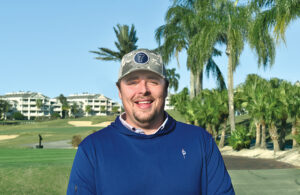High-tech tools that will influence the future of golf course maintenance
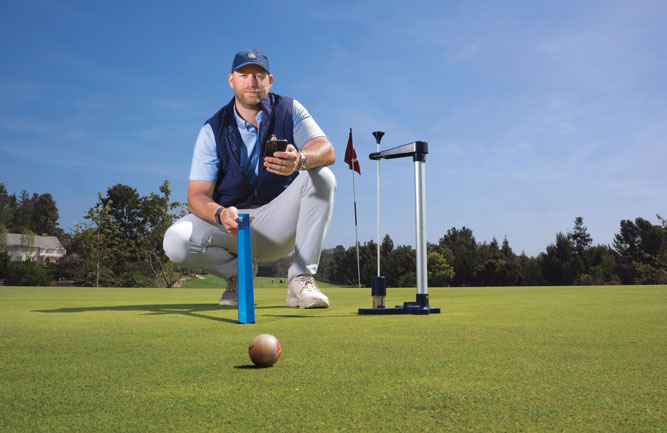
(Photo: Ed Carreon Photography)
GS3
In two short years, Bel-Air CC in Los Angeles will celebrate its centennial anniversary. What better way to ring in the occasion than hosting three United States Golf Association (USGA) Championships, starting with the U.S. Women’s Amateur this August, then the 2026 Curtis Cup Match and finally the 2030 U.S. Mid-Amateur Championship.
Located in the foothill canyons of one of the world’s most famous cities, Bel-Air CC is one of America’s most prestigious courses. The course, originally designed by George Thomas, recently underwent a restoration by Tom Doak and Renaissance Golf Design to bring back the course’s open vistas and minimalist management style. ‘Minimalist management’ means only three heights of cut: greens, fairways and rough. Members can walk off a green, on the green surround and then step on the next tee having never stepped on a different height of cut the entire time.
Expectations there are high, spelled out in all-capital letters like the nearby Hollywood sign.
“The name is Bel-Air Country Club, but we’re a golf club,” says DePippo, who has worked at the club for 10 years, the last 5 as director of golf course and grounds. “People come here to play golf and they want to enjoy golf. They expect the best conditions you can get anywhere in the country. So, we tend to operate at a high level here.”
That’s how he rolls
DePippo, a Penn State grad, is a superintendent who constantly analyzes data to gauge the golf course’s health. When a USGA consulting visit gave him his first look at the GS3 smart golf ball, he was immediately interested.
The GS3, launched at this year’s GCSAA Conference and Trade Show in Orlando, is a Bluetooth-enabled golf ball that measures green speeds, firmness, trueness and smoothness. Upon taking measurements, it instantly uploads the information to the USGA’s Deacon app.
Using the GS3 is easier than a Stimpmeter reading, he says. Roll the ball once each way. A tape measure is unnecessary. For the firmness measurement, a superintendent places the ball in a drop fixture.
“The goal is consistent performance from green to green,” says John Petrovsky, CGCS, manager of Green Section Education for the USGA. “Just wake up your (GS3) device and go into your Deacon app on your phone. It’s all tied together.”
DePippo says he likes that he or his assistants can use the GS3 and the information is instantly available to all of them.
“We’ve really committed to using it every day that we’re open,” DePippo says. “Six days a week we’re pulling data and getting green speeds, firmness, smoothness and trueness. I wanted a consistent way of taking data instead of using different meters.”
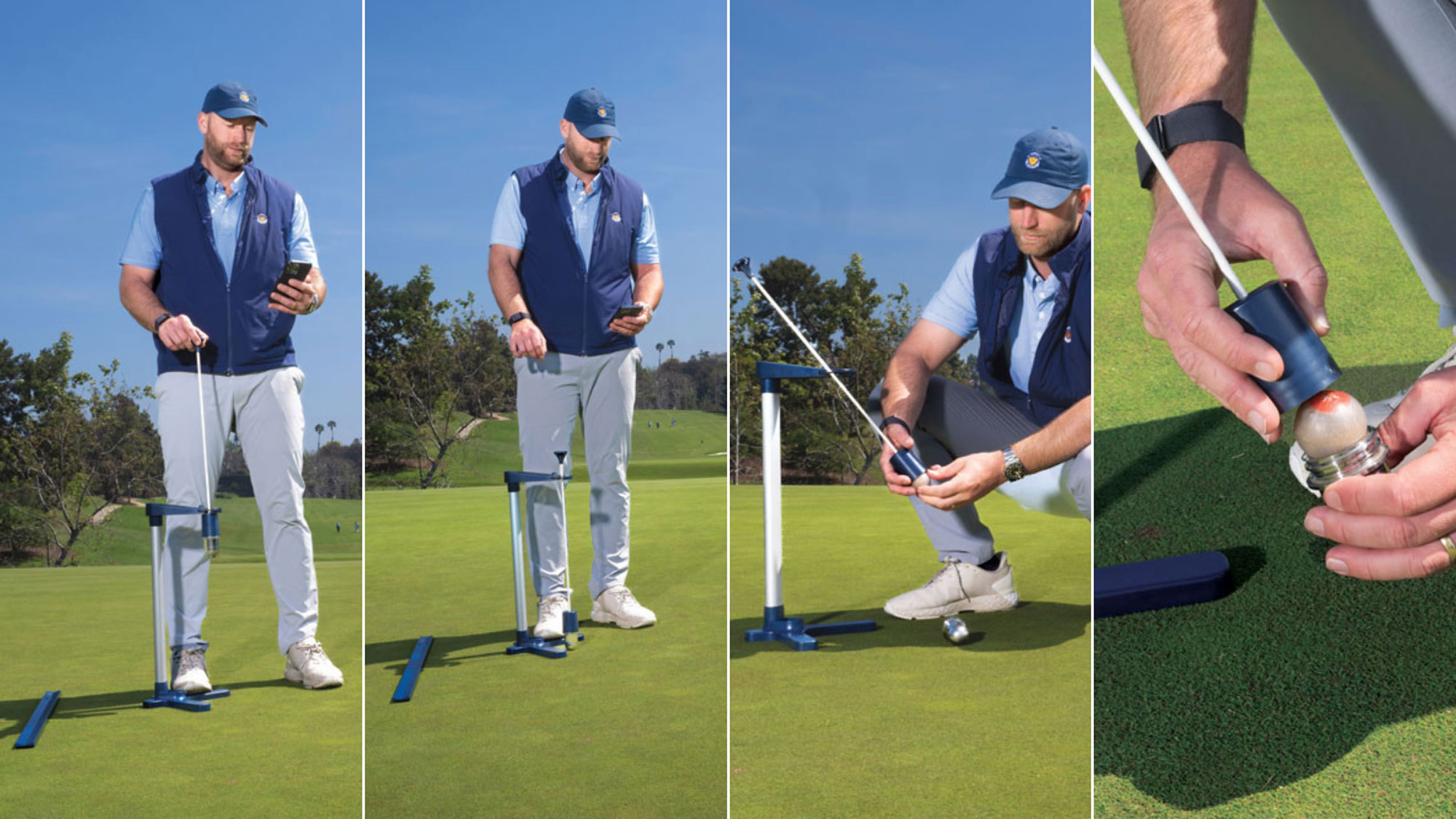
USGA’s GS3 is a Bluetooth-enabled golf ball that measures speeds, firmness, trueness and smoothness. Measurements upload
The fresh tool at Bel-Air
The GS3 arrived at Bel-Air CC last fall. Members are typically interested in the maintenance practices at the course, and the GS3’s arrival was no different.
“It’s obviously new technology and they can tell,” DePippo says. “I share our green speeds verbally, but I don’t post them. In my opinion, we give them the best conditions every day. This tool is for our maintenance practices along with tracking and for keeping things consistent.”
The goal of any new tool is to make the work easier, and DePippo says the GS3 has done that for him and his team, and he thinks other superintendents will also appreciate the benefits of the ball.
“It’s simplified all of the data collection. We don’t need to record anything on our phones or take a note or send a text. And I don’t need to go to the computer,” DePippo says. “I’m interested in seeing other superintendents at similar courses and see what data they’re getting. I think it can help us share our conditioning and our practices and compare them to other courses and find out what they’re achieving with different practices they may be doing. It’s relatable because it’s all the same ball, we’re all taking firmness measurements the same way. For anybody who tracks data, it’s a great tool.”
GreenSight × Husqvarna
GreenSight vice president of sales, Jason VanBuskirk says superintendents tell him his company’s TurfCloud program makes it so they almost rarely have to leave their office.

Jason VanBuskirk
They’re joking, of course, but VanBuskirk says his company’s software does free up some time for a busy superintendent.
“The vision was to give them more time back in their pocket so that they can spend that time on things that matter most,” he says. “Whether that’s the golf course or family, we’re here to make our users better managers of time and labor.”
When GreenSight launched in 2015, its primary focus was utilizing drone imagery to provide superintendents data for reducing water usage and better planning applications, VanBuskirk says.
That evolved in 2018 when the company acquired TurfCloud, along with its “TurfCloud dashboard.”
“We wanted it to be a one-stop shop where superintendents can track everything they need to from labor to applications,” he says. “Being able to have all of their information under one umbrella is really valuable. You know where your job board, spray sheet, soil information and more are going to be.”
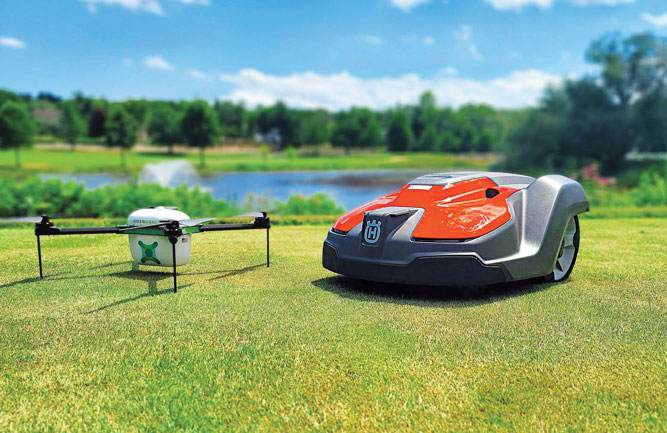
Photo: Husqvarna
Automation nation
Robotic mowers have been around for a while — Husqvarna first launched a solar-powered robotic mower in 1995.
The company’s Automowers have come a long way in those 28 years, as on golf courses, they now mow fairways, rough surrounds and tee boxes, says Dave Plaster, director of business development and golf. The only thing the machines can’t handle — as of now — are greens.
“We can mow sub-300 (300ths of an inch) and we go up to about 2 ½ to 3 inches,” he says. “And the great thing is, one machine can manage both. So, they’re multipurpose machines. A single Automower can go from a rough in one area to a fairway in another.”
Automowers, as the name suggests, run autonomously, meaning they’ll keep working — mowing a fairway and then a rough — until they’re called back or need a charge. The mowers are smart enough to change blade height on the fly before entering a new work area, Plaster says, eliminating potential headaches.
“When it goes into a specified work zone, it’s all programmed so that the machine knows when it goes into a work area, what the height and the pattern is,” he says.
Just as the machines have evolved since the 1990s, there’s still a lot of growing left, Plaster says.
In the future, he adds, superintendents can expect robotic mowers to become more versatile in terms of what they can cut. He also suggests the mowers will continue to up their level of precision, offering tighter cuts and lower mowing heights.
“We are striving to get to a level where a superintendent can use Automowers to maintain any area of the course that they need,” he says. “We want to provide a full suite of solutions.”
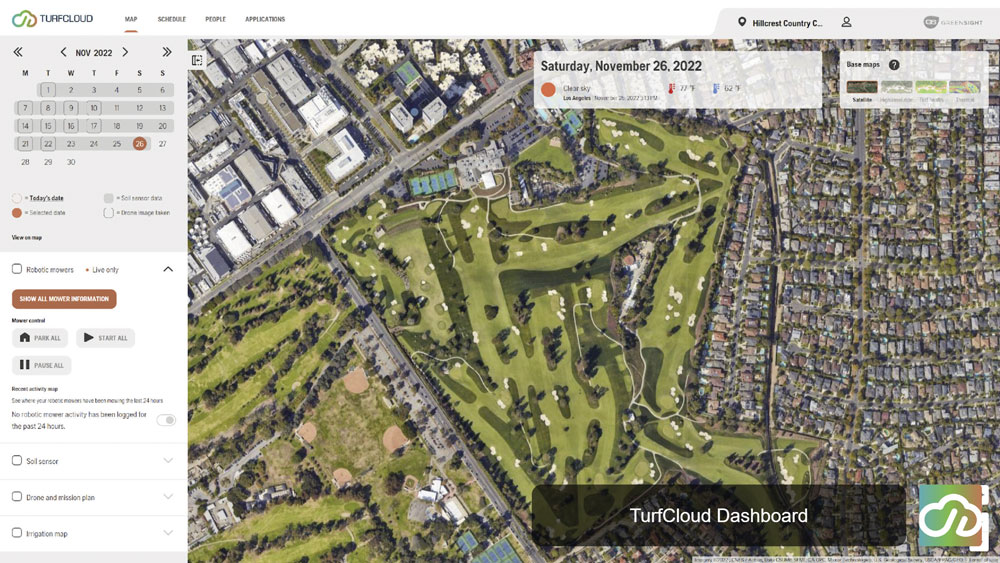
Integrating Husqvarna’s Automowers into TurfCloud provides superintendents with up-to-date mower positioning and coverage. (Photo: Greensight)
The more the merrier
As a step towards providing that “full suite of solutions,” Husqvarna and GreenSight recently partnered to incorporate Automowers into the TurfCloud dashboard.
Through the partnership, the TurfCloud dashboard allows superintendents to see an Automower’s battery life and positioning. It also gives them complete control with the ability to start, pause or send them back to their charging stations.
“My favorite feature is the ability to see a 24-hour activity map,” says VanBuskirk. “At a glance, (the superintendent) can see how much area any individual mower has covered. That’s a powerful tool because, if you have one robot or a hundred robots, you want to see how much work they’ve actually been able to accomplish.”
HawkEye Spray Drone Applications (HSDA)
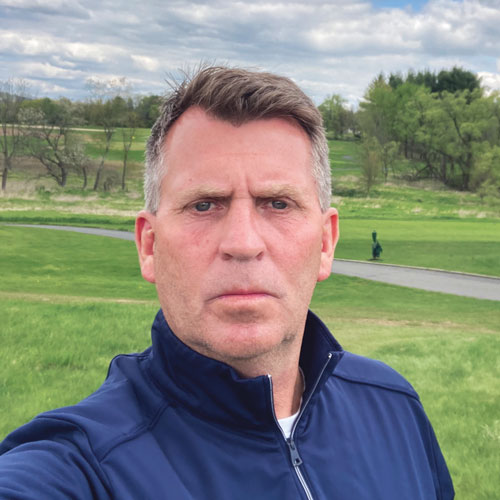
Tim Reinagel
It’s an uncommon sight to see a drone flying over and spraying rough or native areas of a golf course. Most golfers expect manual applications, usually from a team delivering pest control through handheld or ride-on sprayers.
Tim Reinagel, the owner of HawkEye Spray Drone Applications (HSDA) and superintendent at Hawk Pointe Golf Club in Washington, N.J., saw an opportunity to try something new in 2020.
A new opportunity
HSDA is a distributor of drones that apply herbicides and insecticides to areas on the golf course without exposing crew members to chemicals and reducing labor. Field measurements ensure accurate spray patterns with GPS technology that utilizes 18 satellites. This eliminates drift and overspray.
“I was always a drone guy because I did aerial photography,” Reinagel says. “As a superintendent, dealing with and treating native areas became an issue. This was especially true during shortgrass seasons. I wanted an option that treated it faster and didn’t trash my sprayers. It was discovered out of necessity, but one thing led to another. It has grown and proven to be incredibly useful.”
The Federal Aviation Administration (FAA) licensed and certified HSDA to provide aerial herbicide applications in New Jersey, Pennsylvania, New York, Rhode Island and Vermont.
Ten golf courses currently deploy HSDA’s services, but the company hopes to bring more courses online within the next year or so.
“We found a really interesting niche in agriculture,” Akasha Raddalgoda, technical officer at HSDA, says. “Drones are blowing up in farming. They are available all over the country but are not regularly used in golf. Tim found that drones can fill a need in the golf industry. We have been targeting golf courses with native areas that need attention.”
More to come
This summer, HSDA will study granular and liquid herbicides and how the applications effectively control broadleaf and grassy weeds in the rough. A multispectral camera will monitor the results throughout the season. Reinagel said HSDA plans further experiments to study the quality of granular fertilizer applications on the tees.
“In a time of unpredictable labor, we wanted to provide a great tool for all superintendents to use,” Reinagel says. “I have been in this industry since 1990. I love being outdoors and being a superintendent. With this tool, I felt that, unlike a normal sprayer, it would be more efficient to treat the same area with two or three guys using drones. It can be quicker and prevent people from being sprayed with pesticides, which can be very dangerous.”











